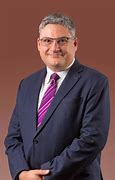
Chief executive Dr Raphael Arndt has revealed the $250 billion Future Fund has switched its listed equities investment focus from index to active fund managers.
Speaking at The Australian Financial Review’s Alpha Live Summit event on 27 April, Arndt said: “For the last five years we have primarily sought to include skill-based strategies through our private markets and alternatives (or hedge funds) programs.
“In light of the changes occurring in the world, and in markets, we are now seeking alpha more broadly.
“Around six years ago we pivoted our listed equities approach away from active managers. At that time markets were being driven by central bank policies and our view was that it was nigh on impossible for active managers to consistently add value over and above their fees.
“Conditions have changed. Economies are diverging and companies can better distinguish themselves in a more challenging environment. As a result, active alpha-seeking strategies in our $65 billion listed equities program are increasingly attractive, provided that we can be confident that returns are driven by skill and not luck.”
Arndt said the Future Fund was using new technology to better understand what was driving investment managers’ returns, to better understand whether skill actually existed or whether managers were simply applying mechanical strategies which could cheaply be re-created.
He said the fund was doing everything possible to search out skill wherever it existed.
“Skill is rare, and expensive,” he said. “Paying sometimes high fees to fund managers is necessary to access skill. Because of this, investors sometimes shy away from skill-based strategies.
“In my view, investors should be questioning these trade-offs again.”
Arndt also queried whether best-in-class performance could be replicated by investment institutions’ internal teams. While it might be achieved by some investors in some strategies he doubted that it could be achieved for all investors across all strategies.
He said markets were constantly changing and strategies needed to evolve in response.
“For example, changes in domestic markets have made small-cap equities attractive to us for the first time and we have commenced a new program to invest in them in recent months,” he said.
In The Future Fund’s latest quarterly portfolio update, also released on 27 April, Arndt said benign conditions that had endured across economies and investment markets for decades were in the process of significant change, requiring investors to explore new ways to deliver sustainable, long-term, returns. The overall portfolio had been positioned below neutral risk settings in response.
“Our focus remains on protecting the portfolio from a range of scenarios, including sticky inflation leading to prolonged higher rates and the risk of global recession, while seeking opportunities to generate long-term returns,” he said.
“The risk of this type of stagflationary environment is rising.”
The Future Fund has now returned 7.7% per annum since inception in May 2006 compared with a target return of 7.0%. The return for the attest one-year period has, however, slipped to 1.1%.
Over the year to the end of March, alternative assets have moved ahead of private equity (including venture capital) as the fund’s second largest asset class, behind listed equities, representing 17.1% of the portfolio ($34.616 billion) compared with 16.4% ($33.320 billion) for private equity.
A year earlier, private equity investments had made up 15.8% of the fund’s portfolio compared with 15.2% for alternatives, so while allocations to private equity have increased by 0.6% allocations to alternatives have increased by 1.9%.
Allocations to equities increased 0.8% from 30.9% to 31.7% ($64.404 billion).
Chair of the Future Fund Board of Guardians, Peter Costello AC, said high inflation and sharply rising interest rates that began in 2022, and continued into 2023 had combined to build uncertainty and volatility in global markets.
“The effects of higher rates are playing out in different ways across different markets around the world making investing conditions unpredictable.
“The ASX 200 was flat (0.1% return, including dividends) for the 12 months ending March and the S&P500 was down 7.7%. Against this backdrop, the Future Fund delivered a positive 1.1% return for the 12 months.
“The positive returns achieved in the second half of 2022 continued with a 3.4% gain in the March quarter.”
He said the board continued to focus on ensuring the portfolio would be resilient to a range of scenarios while delivering attractive risk-adjusted returns.
But he concluded: “We expect that real returns to investors, with the context of significant inflation, will be substantially below those of recent years.”
Image: Future Fund chief executive Raphael Arndt.

